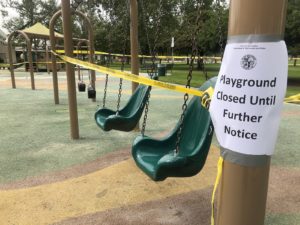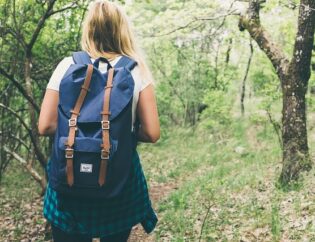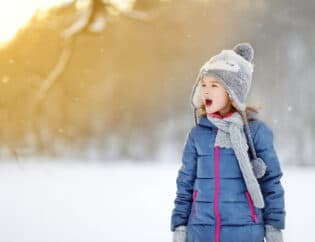
The worldwide coronavirus pandemic has meant months of stress for society, but, like many pandemics (the 1854 cholera epidemic in London led to the discovery that contaminated drinking water leads to disease), there may be some positive, even paradigm shift-level changes that come out of it.
What if the confined and restricted indoor lives we led throughout the pandemic lead us— and childhood— back to nature again? This might not be as revolutionary as eradicating disease, although that is arguable given the nature deficit disorder, screen addiction that characterizes modern childhood.
During the pandemic, as playdates, playgrounds, movies, museums, churches, schools, and classes of all kinds were shut down, experiences in nature became one of the few activities for families to engage in. Families started to go on nature hikes for the first time, embark on nature journaling and poetry, transform their backyards into nature play zones, and camp out in their backyards. With hope, this renewed interest in the outdoors will be a permanent change or at least lead to new habits so that childhood is not exclusively lived inside.

Another hopeful sign is the rising popularity of outdoor classrooms and outdoor schools as a solution to keeping kids socially distanced while learning. Outdoor schooling is an approach that countries like Ireland, Scotland, and Italy are considering. Hopefully, more schools around the world will follow their lead.
Likewise, we at Childhood by Nature hope we will see a shift in thinking in playground design. As playgrounds were draped with crime scene tape to prevent kids from playing on them and spreading COVID germs, they became a constant reminder of the gloomy times. But as children worldwide were shut out from public playgrounds, they had to rethink how they approached play sans structure. Their workarounds were creative (chalk hopscotch and mazes, window scavenger hunts) and with hope, will lead to more creative play designs, especially in urban areas where space is at a premium. Jennifer DeMelo, director of programs and operations at Kaboom, a nonprofit organization that helps build playgrounds for children, said in a recent interview “We have to look to the kids to show us how to play.” Learning from how kids play during COVID might translate into more playgrounds with permanent hopscotches, play pathways that carve out kid-centric space in dense urban neighborhoods or “play everywhere” design, which encourages integrating play spaces into the everyday environment such as close by grocery stores and bus stops rather than at specific destinations.

Just as exciting as a more everyday approach to play, the very design of the typical playground may change. In Berlin, designers Martin Binder and Claudio Rimmele unveiled a concept for an "infection-free" playground where children could play together safely during the coronavirus pandemic. The innovative playground is made up of a group of individual play areas shaped like a cluster of water-lily pads on a pond. The design allows for each child to have their own playing platform with different activities to do such as sand play, ladders to climb or hamster wheels to run in. The play platforms have individual paths leading to separate entrances so kids can play apart but together as they can see and communicate with each other from a safe distance. And of course, disinfectant dispensers can be added to aid in cleaning
Such innovative playgrounds are interesting but consider that natural playgrounds are likely much more economical and just naturally provide fewer surfaces to touch and spread germs. Made of natural elements such as trees, stumps, logs, boulders, water, plants, sand, ropes, bridges, treehouses, natural playgrounds engage kids in play such as balancing on log beams, hopping from rock to rock or playing in a water feature.

If more public playgrounds went the natural route for COVID-safety precautions, they wouldn’t be making a bad choice for children's health and development. In a recent meta-analysis of over a dozen studies comparing play natural playgrounds with free play in traditional playgrounds with swings, slides, and structures, natural playgrounds elicited more happiness than the traditional playgrounds. Children also played more constructively (building things with found materials), more dramatically and imaginatively and were more exploratory.
It’s still too early to predict exactly how playgrounds will change but it’s not too early to advocate for more natural playgrounds in your neighborhood or school. In any event, one thing we surely learned from COVID-19 is how important playgrounds are to children everywhere, especially in urban areas where there are few backyards.











